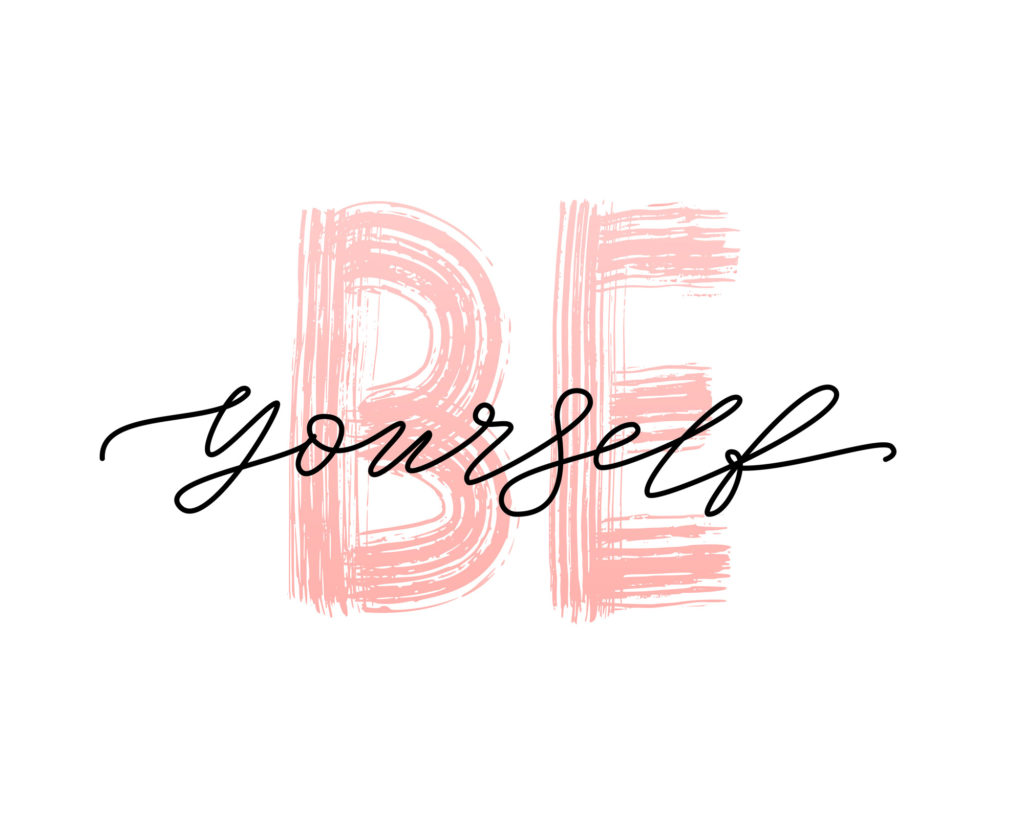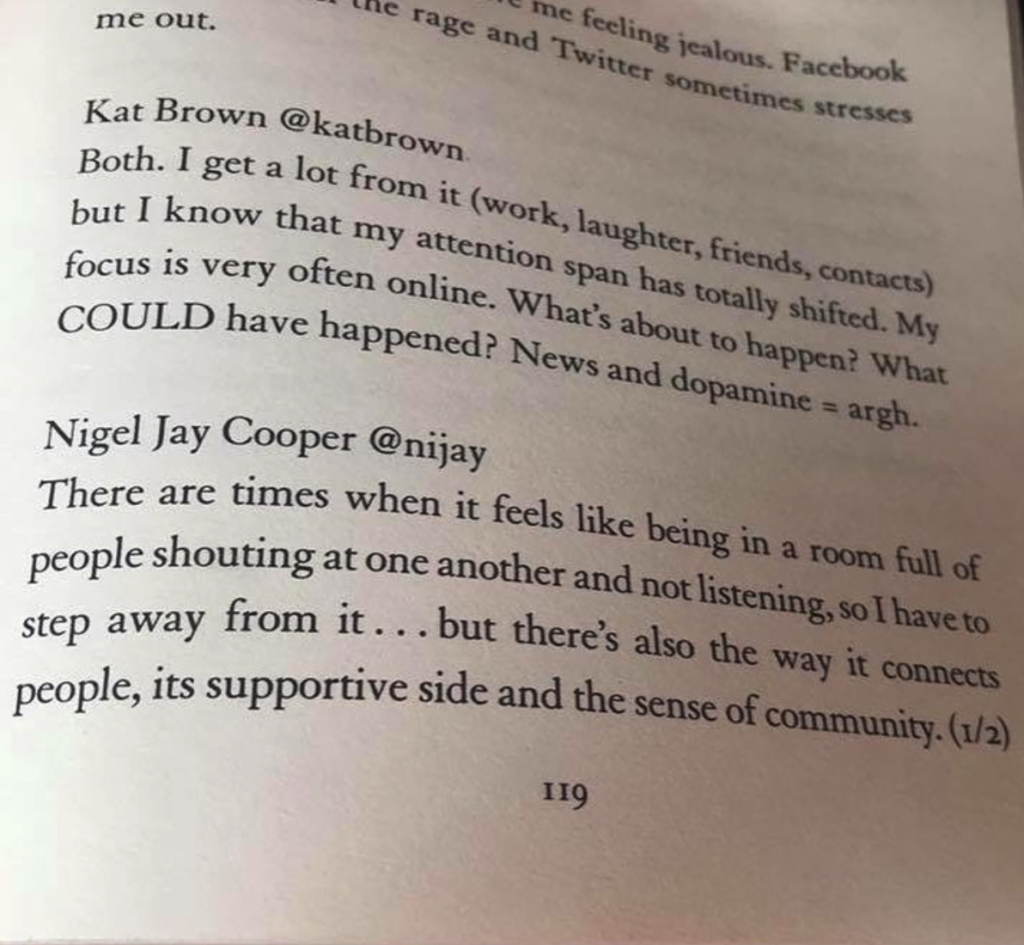
Do employees have to post and build influence on every social network?
Author Matt Haig included one of my tweets in his book Notes on a Nervous Planet last year. He’d been asking about how social media can affect people’s mental health and I’d responded with the below.
As the photo popped up in my memories, it got me thinking about how different all of the social networks are… how we use them all differently and what this means for people running employee advocacy programmes.

Social media can be overwhelming – and it’s always worth remembering this if you’re embarking on an employee advocacy programme.
It isn’t only about providing content and support to your employees. It won’t all be solved with some content guidance and an app (although our app is marvellous, obviously :D).
The point is, moving into the social media world professionally can be scary.
Despite working in social for the past 15 years, I’m no more immune to this than the next man or woman, so I thought it might be worth sharing my journey through the networks and how I’ve ended up using them.
I’ll start with the network I stopped using altogether personally: Facebook.
I haven’t used this in my private life for just over two years – and personally, I think this was a great decision.
At the time, with Brexit and Trump, there were too many angry, divisive memes and voices on there for my liking. It was giving me anxiety, so I decided it was no longer the platform for me.
Professionally, however, I knew I needed to keep a foothold in there, partly for this business, Togethr, and partly because I’m also an author. Having a Facebook page is pretty much a marketing necessity for authors.
This approach to keep a professional hand in Facebook but not a personal one felt counter-intuitive at first, but it has actually worked out really well for me.
I’ve got a professional author page where I can still be me, but I only talk about book-related subject matter – and I don’t get caught up any drama on the personal Facebook side of things.
Twitter is my preferred space but it certainly isn’t everybody’s.
I’ve been on Twitter since its very early days and have built up a good and diverse following on there – something I’m proud of – but it’s also been challenging.
For many years running this business, I built a profile as a digital marketer and entrepreneur on Twitter. Then in 2016, my first novel Beat The Rain was published, so I also began bringing my ‘author life’ to my Twitter feed.
For a year or two, I tried to maintain the balance between my business persona and my author persona but the audiences were too diverse. If I pleased one audience, I bored another… and vice versa.
It was hard to build a network for both at once, so I decided to choose.
In the end, I decided that for me, I’d focus on ‘book Twitter’. Five years on and I’m now part of a very lovely and supportive author, book blogger and reading community on Twitter. It didn’t come overnight, though. I spent the years cultivating it but I found the right space for me.
Like all social, Twitter can be a challenging environment if you don’t know why you’re there or who you’re connecting with. My advice? Choose your ‘tribe’ on Twitter and work at connecting with those people.
Linked In
I hold my hands up, I’ve neglected this network for a long while. Actually, I don’t think I’ve ever engaged with it properly. I was never quite sure what to do with it.
Was I supposed to be über professional all the time? I run a business, after all. Thing is, that’s not really me. I don’t mean I’m unprofessional, but I’m relatively open and personable and I never really feel like I could marry professionalism and personality together on Linked In.
Recently, I’ve dipped my toe back into it and I can see I was wrong. People inject a lot of themselves into their posts… it’s got more of a ‘whole person’ feel to it than I felt it had in the early days.
It’s still a business platform (which I’m glad of) but it also seems to understand people are more than only their jobs… It now knows that careers are carved out by actual human beings.
I’m tentatively going back onto Linked In with a new mindset, primarily wearing my business head (but not excluding my novelist head)… time will tell whether I have the same issue with this as I did with Twitter when my debut was published but actually, I don’t think I will on Linked In – I think this network will support both.
Instagram works brilliantly for many of our clients running employee advocacy programmes.
It’s not a network I use personally other than to post the odd picture of my dog. I’m aware I should probably use it more for the ‘bookstagram’ side of things and we’re talking about if we should use it for Togethr – and if so how.
The real point of this blog article is that all of the social networks are different and we should celebrate the fact we use them differently.
Employees don’t need to become ‘influencers’ on every platform available, it will depend on your business and what stories they have to tell.
Social can be not only what your business needs it to be but what your employees need it to be also.
An employee advocacy programme isn’t about forcing employees to publish the company line on social media, it’s about finding where your authentic brand story meets their authentic selves. The intersection is where the magic happens.
Don’t be swayed into thinking your employees have to be something other than themselves if they’re acting as your brand advocates. There will be a message and a network that works for both of you.
You need to know why they’re posting on your behalf and you need to communicate this to them. Once they know why they’re on there and who they need to connect with, they’ll find the right network for them.
They don’t need to be influencers on all networks. They only need to feel comfortable and active on those that work for them.
- A version of this article was also posted on the Author Spark website related to author marketing.